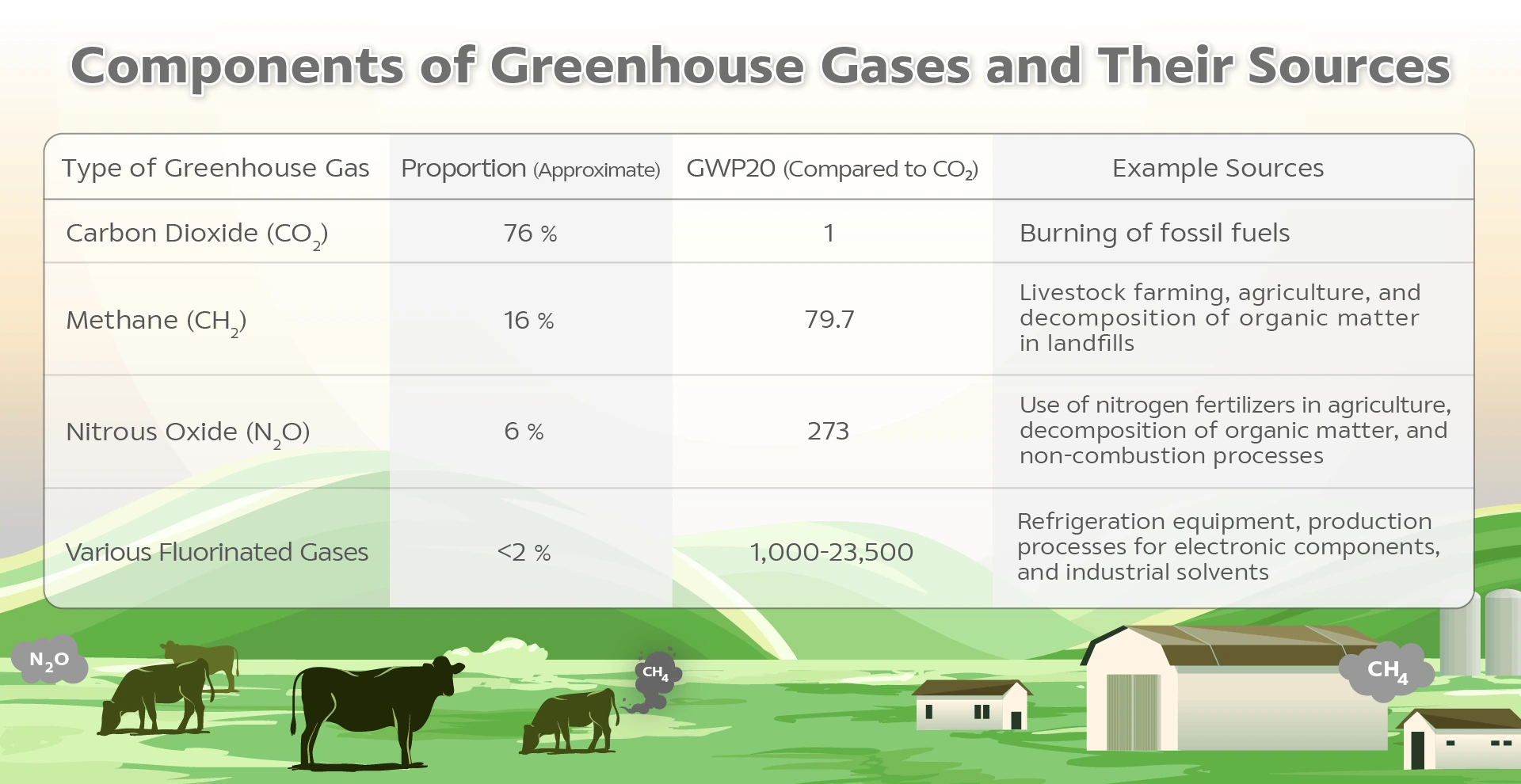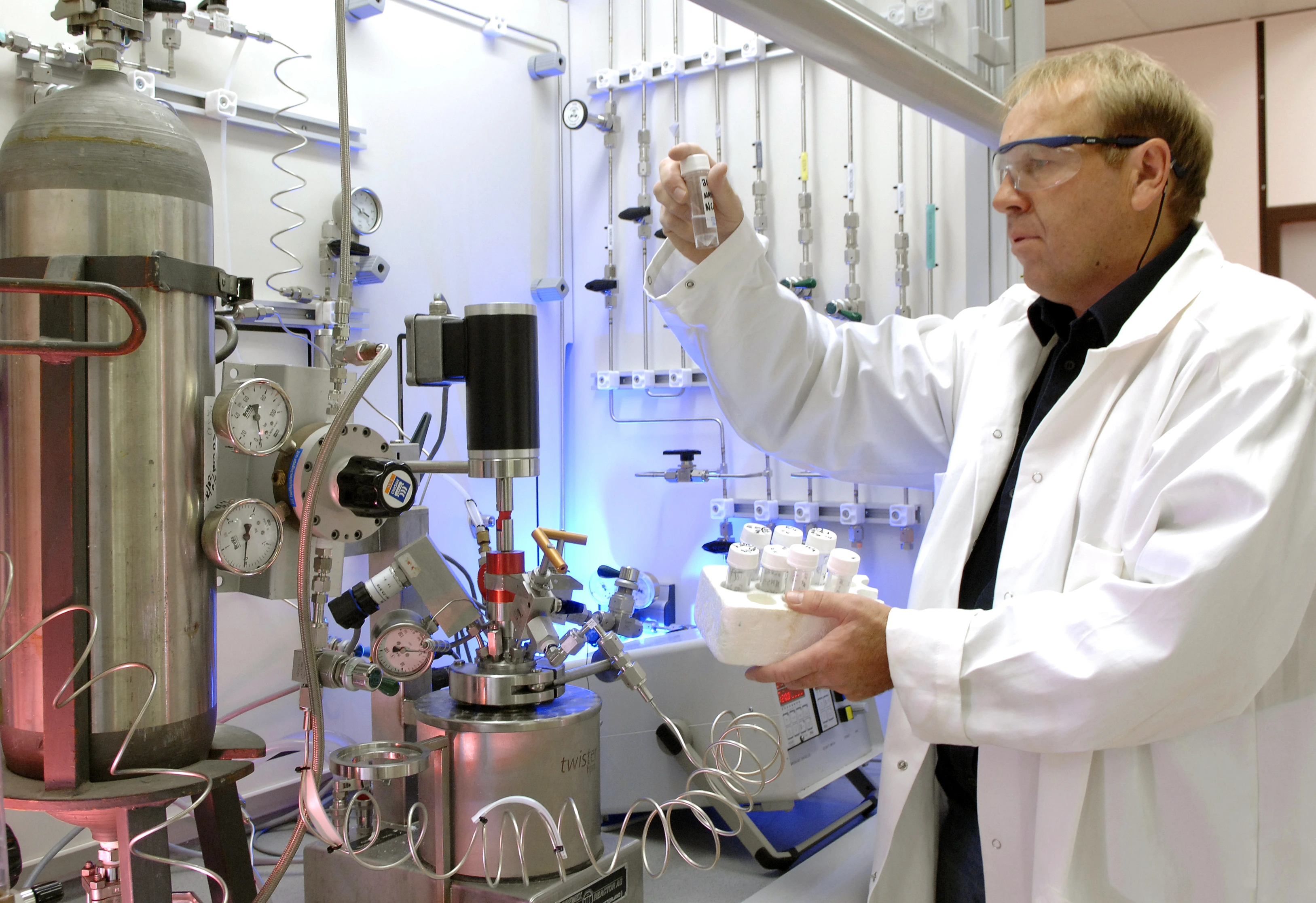When thinking about the primary sources of greenhouse gas emissions and pollution, most people picture transportation, industrial operations, energy use, and fossil fuel combustion. However, pollution is everywhere and comes from many sources—some of which are surprisingly unexpected. Certain everyday activities can emit greenhouse gases (GHGs), and many environmental issues stem from overlooked aspects of daily human life.
Greenhouse gases remain suspended in the Earth’s atmosphere and have the ability to absorb and re-emit heat radiation back to the planet’s surface. This process contributes significantly to global warming. While many believe that the term “greenhouse gas” refers to a single gas, it actually encompasses various types of gases, each with its own Global Warming Potential (GWP). GWP measures how much heat a GHG traps in the atmosphere over a specific period, relative to carbon dioxide (CO₂), which is assigned a baseline GWP of 1. This article focuses on the 20-year GWP—a timeframe often used to assess short-term climate impacts and underscore the urgency of mitigation efforts.
Key Greenhouse Gases and Their Characteristics
- Carbon Dioxide (CO₂): Emitted mainly through the combustion of fossil fuels such as oil, coal, and natural gas, CO₂ accounts for approximately 76% of total GHG emissions. Its 20-year GWP is 1, serving as the baseline for comparison.
- Methane (CH₄): Emitted from livestock farming, agriculture, organic waste decomposition in landfills, and the extraction and transport of fossil fuels. Methane makes up about 16% of GHG emissions. Its 20-year GWP is approximately 79.7 for biogenic sources and 83 for fossil-based sources.
- Nitrous Oxide (N₂O): Emitted primarily from livestock manure, the application of nitrogen-based fertilizers in agriculture, fossil fuel combustion, and industrial activities. N₂O accounts for about 6% of GHGs and has a 20-year GWP of approximately 273.
- Fluorinated Gases: These include Hydrofluorocarbons (HFCs), Sulfur Hexafluoride (SF₆), and Nitrogen Trifluoride (NF₃), used in refrigeration, electronics manufacturing, and industrial solvents. Although they make up less than 2% of GHGs, their 20-year GWPs range from thousands to tens of thousands, making them extremely potent contributors to global warming.
(Data sources: IPCC AR6 by the Intergovernmental Panel on Climate Change and GHG Protocol’s Global Warming Potential Values)

GHG Emissions from Agriculture: The Overlooked Threat
While industrial fluorinated gases are widely recognized, methane and nitrous oxide also have significant warming potential but receive less public attention. This is largely due to the predominant focus on carbon dioxide reduction from factories and combustion activities, with far less scrutiny on agriculture-related emissions.
According to UNEP’s Emissions Gap Report 2024, global GHG emissions rose by 1.3% in 2023. The Agriculture, Forestry, and Other Land Use (AFOLU) sector accounted for roughly 11% of total global emissions, equating to approximately 6.5 gigatons of CO₂ equivalent (GtCO₂e). Methane and nitrous oxide emissions from agriculture contribute disproportionately due to their high GWP values.
Methane and Nitrous Oxide: Agricultural Pollutants with High Climate Impact
Agricultural and livestock activities contribute to pollution through the emission of methane and nitrous oxide gases. When classified by activity type, it is found that the raising of ruminant animals, such as cattle, along with current manure management practices, accounts for as much as 39% of total greenhouse gas emissions in the agricultural sector. Methane, in particular, has a global warming potential (GWP) 80 times greater than carbon dioxide over a 20-year period and remains in the atmosphere for approximately 12 years.
In addition to livestock farming, crop cultivation also contributes significantly to greenhouse gas emissions, primarily through nitrous oxide released from the use of synthetic nitrogen fertilizers, which accounts for about 13% of agricultural emissions. Nitrous oxide is a greenhouse gas with a global warming potential 270 times greater than carbon dioxide over a 20-year period and can remain in the atmosphere for around 120 years. The Global Nitrous Oxide Assessment by UNEP indicates that nitrous oxide emissions from human activities—especially from the use of chemical fertilizers and livestock manure in agriculture—are rising rapidly and are a major factor putting the goal of limiting global warming to no more than 1.5°C, as set out in the Paris Agreement, at serious risk.
Addressing Global Warming Through Greenhouse Gas Reduction
To effectively address global warming, efforts must not focus on a single type of greenhouse gas alone but rather emphasize integrated action across all sectors. The industrial sector must take serious steps to reduce carbon dioxide and fluorinated gas emissions, while the agricultural sector should seek solutions to mitigate methane and nitrous oxide emissions. At the individual level, environmentally conscious consumption must be prioritized.
SCGC, a leader in polymer innovation and integrated solutions for sustainability, is fully committed to reducing carbon dioxide emissions. One of our key ESG goals is to cut greenhouse gas emissions by 700,000 tons of carbon dioxide equivalent by 2030, aiming for carbon neutrality by 2050. This is being pursued through various projects and collaborations, including increasing the share of renewable energy, promoting the use of low-carbon energy and materials, applying carbon capture, utilization, and storage (CCUS) technologies, and developing environmentally friendly polymer production technologies, such as:
SCGC x IHI – A joint study and pilot plant project to capture carbon dioxide and convert it into light olefins, supported by Japan’s New Energy and Industrial Technology Development Organization (NEDO), a government agency. The CCU technology captures CO₂ from production processes and reacts it with hydrogen to produce light olefins and other hydrocarbon compounds. These can be reused in production, reducing the reliance on naphtha feedstock and lowering carbon emissions to the atmosphere.
PyroCO2 – An international collaboration to develop technology that captures and utilizes carbon dioxide to produce acetone, an essential organic solvent in industrial manufacturing. The project is expected to use approximately 10,000 tons of CO₂ annually from industrial sources. SCGC is one of 20 participating organizations—and the first Thai company involved—under funding from the EU Commission. SCGC plays a key role in innovating the conversion of captured carbon into value-added products by producing polypropylene (PP) from project-derived propylene.

Plastics2Olefins – A technology development project aimed at recycling plastic waste into olefins, which are feedstocks for plastic production. This process can reduce greenhouse gas emissions by up to 70% compared to conventional methods. The project focuses on R&D to address environmental challenges by reducing plastic waste and CO₂ emissions. It includes a demonstration plant in Europe that converts landfill and hard-to-recycle plastics into olefins, and a feasibility study for plant development in Asia, in collaboration with 13 partners from 7 countries.
SMX™ Technology – A proprietary technology that produces extra-strong and durable HDPE plastic resins. It enables the creation of stronger end-products or reduces material use while maintaining product strength, thereby lowering carbon dioxide emissions. SCGC is currently applying this technology in the production of plastic resins for various environmentally conscious brands.
Reducing greenhouse gas emissions is a crucial starting point for mitigating global warming, and all sectors must take serious action. For example, in the industrial sector, this can be achieved by transitioning to clean energy sources or improving production processes to lower carbon dioxide emissions. In agriculture, efforts can begin with proper management of agricultural waste, the use of organic fertilizers, reduction in chemical usage, improvement of wastewater treatment systems, or adjustments in animal feed. At the individual level, people can adopt more environmentally conscious behaviors, reduce excessive resource consumption, and manage waste more effectively to increase recycling. At SCGC, we are fully committed to the mission of reducing carbon dioxide emissions and are ready to build a sustainable world together with everyone, through the continuous development of environmentally friendly polymer innovations and solutions, driven by the belief that a livable world is possible if we all work together.












